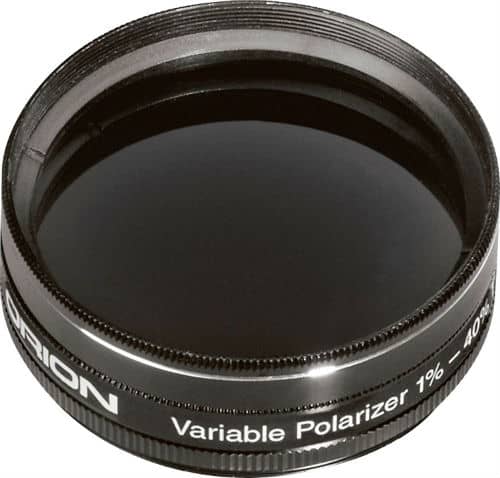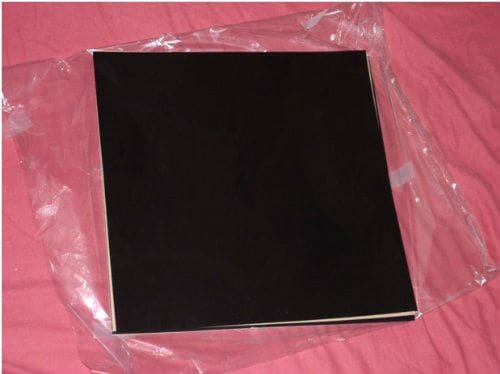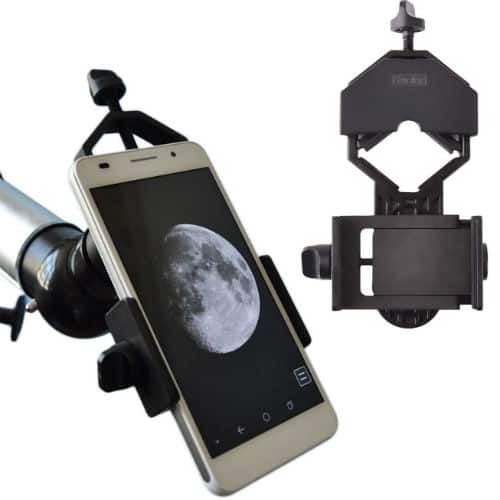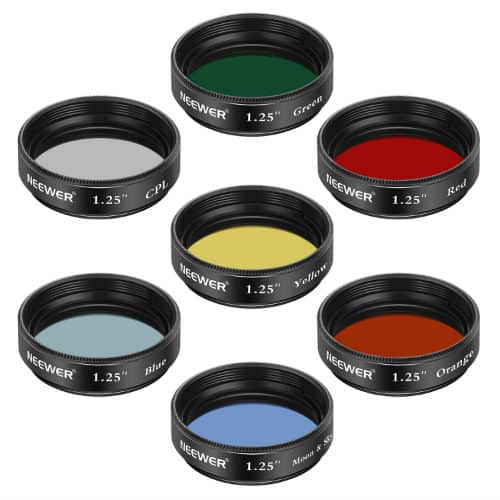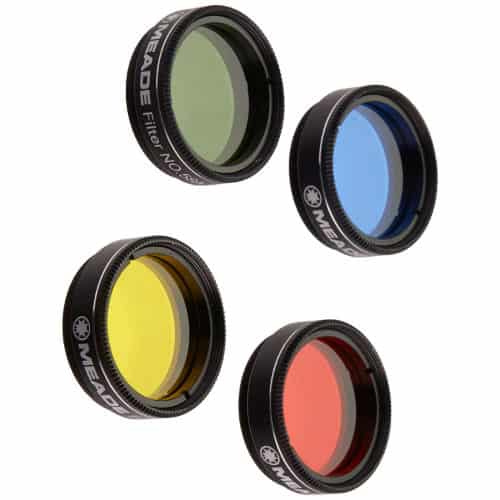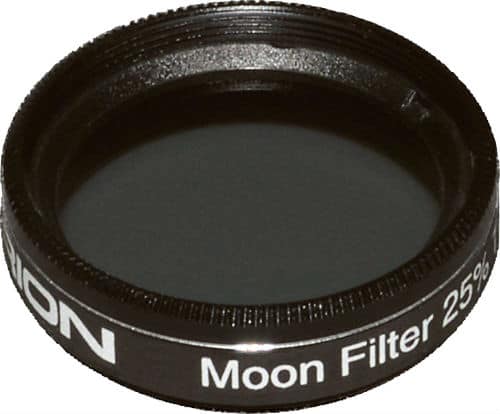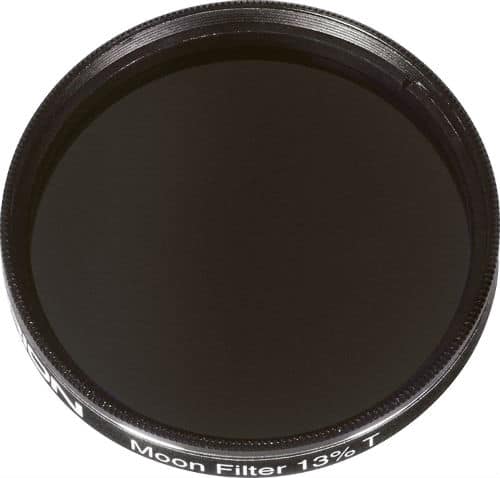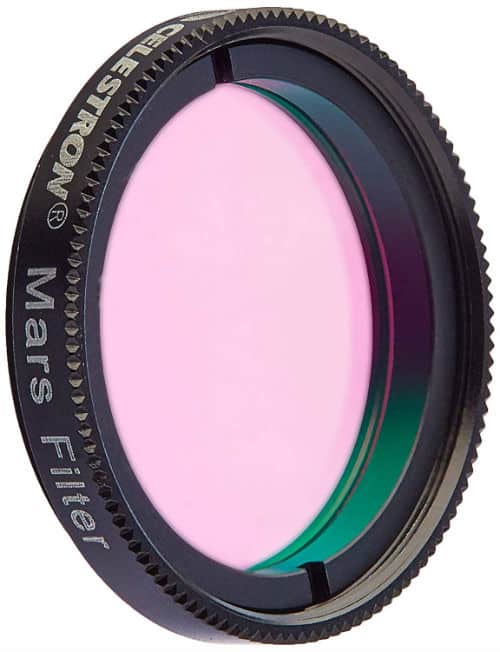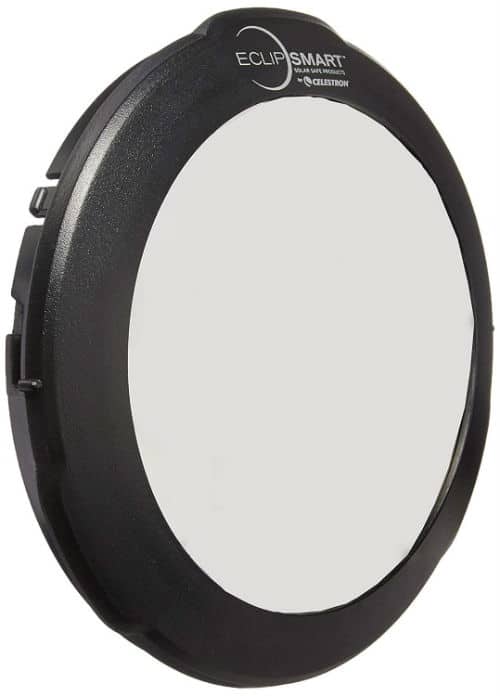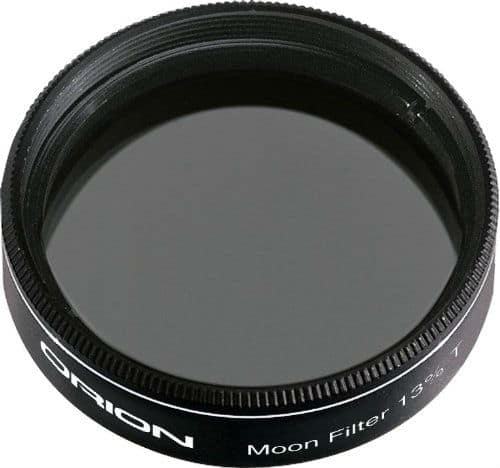Astronomy is said to be the study of celestial objects and phenomena outside the Earth's atmosphere. Since this study cannot be done with the naked eye, astronomers take help from telescopes to view the universe properly. But many factors hinder clear viewing of these celestial bodies either by the naked eye or through the telescope. These factors include light pollution, air pollution such as smog and dust particles, the glare of sunlight on these stars/planets, etc.
People living in cities are always surrounded by light. This light creates a glaring effect that stops the astronomer from getting a clear view. In the same way, air pollution like dust particles and smog can produce blurred images through the telescope.
Telescope filters can bring a huge difference in image quality, they significantly improve the view and help the astronomer in numerous ways. There is a variety of filters available in the market, and they all have different functions. This article reveals the best telescopic filters available in market for your convenience.
Our Overall #1 Rated Pick
One of the best telescope filters is the Orion 1.25 inch 13 percent transmission moon filter because it helps considerably in decreasing the glare and improving contrast. It improves the image quality by fitting directly to the 1.25-inch eyepiece of the telescope. It helps in canceling out almost 87 percent of light gathered by the telescope, providing a clearer view with higher contrast.
Due to this higher contrast provided by the 1.25 inch 13 percent transmission moon filter, the astronomer is able to do a detailed study of the moon. This Orion Moon filter is special because it does not alter the color while reducing overall brightness.
10 Best Telescope Filters Comparison Chart
Image | Product Name | Ranking | Price |
|---|---|---|---|
1 4.70 | |||
2 4.70 | |||
3 3.60 | |||
4 4.70 | |||
5 4.80 | |||
6 4.90 | |||
7 4.20 | |||
8 4.20 | |||
9 4.50 | |||
10 4.50 |
The 10 Best Telescope Filters in 2019
In this section, we review the Top 10 telescopesfilters available for amateurs and professions.
One of the best telescope filters is the Orion 1.25 inch 13 percent transmission moon filter because it helps considerably in decreasing the glare and improving contrast. It improves the image quality by fitting directly to the 1.25-inch eyepiece of the telescope. It helps in canceling out almost 87 percent of light gathered by the telescope, providing a clearer view with higher contrast.
Due to this higher contrast provided by the 1.25 inch 13 percent transmission moon filter, the astronomer is able to do a detailed study of the moon. This Orion Moon filter is special because it does not alter the color while reducing overall brightness.
Irradiation is the drop in image quality at the boundary between light and dark areas, this eyepiece filter helps in reducing irradiation as well. The Orion neutral density eyepiece filter also helps in conserving dark-adapted vision while viewing the moon.
So, in summary, the main features of this moon filter by Orion include that it: reduces glare, is able to fit directly on the 1.25 inch eyepiece of the instrument, allows only 13 percent of light to pass through to boost contrast, and does not alter the color of the moon due to its neutral color.
All these features make it one of the best filters of 2019.
PROS
CONS
Telescope filters aren't only used while viewing the moon, if an astronomer wishes to view the sun, he will need assistance from a solar filter. That is where the silver-black polymer filter comes in. You can buy this sheet and make the filter by yourself, saving money in the process. This filter is made up of the silver-black polymer, which is widely used to view sunspots, granulations, and eclipses through telescopes as well as through binoculars.
It is manufactured by Thousand Oaks Optical, Arizona, who are well known for manufacturing safe solar filters for over 30 years. Another good thing about this filter is that the sun appears in its normal orange color. This filter sheet is placed in our list of top ten telescope filters because it is a great alternative for expensive ready-made solar filters.
PROS
CONS
This is not a conventional telescope filter but instead is an adapter to mount your smartphone on your telescope. You can put your phone in video mode or take amazing pictures of celestial bodies by using this adapter.
The great thing about this adapter mount is that it isn't just compatible with telescopes but can be used with binoculars, microscopes, spotting scopes, and other instruments as well, except riflescopes. It can be used with eyepieces of diameter 28mm – 47mm, but a larger size is also available that fit diameters 32mm – 62mm. It can be used with many models and brands of smartphones, like iPhone X, 8plus, 8, 7plus, 7, 6plus, 6, 5S, 5, 4S, and many models of Android phones so can be used by almost anyone.
It has an adjustable clamp to keep the phone in place and the adjustable locking mechanism uses a steel bolt instead of a spring, there is also no contraction on the phone screen. It is durable - mainly made with metal (zinc alloy) with phone clamps made up of high-quality PA plastic. It is compact and also lightweight.
This phone adapter mount made it to our list of best ten telescope filters because it helps in viewing the universe not through the eyepiece but through the phone screen. In this way, it also enables the user to make videos and take pictures. In this age of social media, being able to share pictures taken through a telescope are appreciated by everyone, so this phone adapter can be a great buy. It has a rating of 3.6.
PROS
CONS
This filter set is also one of the best telescope filters out there. The set includes a moon filter, a CPL filter and 5 filters of different colors including red, orange, yellow, green and blue. These filters help in reducing eye fatigue that usually occurs while using a telescope, by increasing contrast, reducing and, and making the view more high resolution.
The moon filter helps in enhancing the details of the view by reducing glare. It works by transmitting light in the visual spectrum only and filtering out all the remaining wavelengths. The second filter in the set is the CPL filter. This filter helps in cutting through the reflections of light normally obstructing the details of the celestial bodies.
Other than these two filters, the set includes 5 color filters. The Red one helps in viewing Mercury and Venus better during the day and makes them stand out against the blue sky. It also enhances details on Saturn. The Orange filter penetrates clouds and increases the contrast between light and dark areas.
In addition to that, it helps in viewing the dust storms on Mars, the Great Red Spot and improves views of Jupiter. The yellow filter is unique as it enhances details of polar ice caps and deserts on Mars. The green filter helps in viewing Mars in more detail as well as in viewing the rings of Saturn and belts of Jupiter. It is also a great moon filter.
The blue filter enables you to view the atmospheric clouds on Mars. The moon and CPL filter come in a standard size and fit most telescopes. The color filters can be screwed on to the eyepiece. It has a rating of 4.7.
PROS
CONS
This filter set fits on the Meade 1.25-Inch eyepiece as well as on other eyepieces. This set includes 4 different filters of yellow, red, green and blue colors. The Yellow filter has 74 percent transmission, the red one has 25 percent transmission, the green filter has 24 percent transmission and the blue filter has 30 percent transmission.
The yellow filter is ideal for telescopes having a 6 inch or larger aperture. It is great for viewing Jupiter, Saturn, and Mars. The red filter enhances blue-green contrast on Jupiter, Mars, Saturn, and Mercury. It is a great buy. The green filter fits perfectly on instruments with an aperture of around 8 inches. It rejects blue and red tones in the image and helps in viewing it better.
The blue filter works best when used for viewing the moon but it also works to balance contrast on Jupiter and Saturn. This set comes with a 1-year warranty and so is part of our best telescope filters list. It has a rating of 4.8.
PROS
CONS
This telescope filter by Orion transmits 25 percent of incoming light and has minimal dimming. It works perfectly with small aperture telescopes as they do not require too much dimming of light, the small aperture itself allows only a small amount of light to pass so the overall brightness is less distracting than in other telescopes having bigger apertures.
It is ideal for viewing the moon in its crescent phases as it does not block significant light. This is important because, during the crescent phases, the moon does not have a prominent glare so using this filter works perfectly in blocking only the extra glare and provides optimal viewing quality.
This filter fits directly on the barrel of 1.25-Inch eyepiece, rejecting 75 percent of the light hitting the eyepiece. It provides the user with a view having improved contrast and reduced glare. This Moon filter enhances contrast but does not alter the original color of the image, causing the user to enjoy the experience of viewing the universe comfortably. It makes the lunar surface details pop out more so one can view the craters, valleys, and mountains on the moon more clearly.
The Orion 1.25-Inch, 25 percent transmission filter is said to be one of the best filters to view the moon during its crescent phases by blocking just the right amount of light hitting the telescope so the image is neither too bright nor too dark. It has a rating of 4.9.
PROS
CONS
The moon reflects the light coming from the sun and produces a glare around itself in such a way that to the naked eye, it looks like a ball of light. Viewing the moon through the telescope without a filter also does not help much as the excess light from the sun washes out the details on the moon's surface. Using a moon filter can bring an enormous change in the image seen through the telescope. For this purpose, this filter is your best bet.
It enhances the view by transmitting only 13 percent of the incoming light so the view is not overwhelmingly bright. It is better to be used with large aperture telescopes as it tends to cancel out a large amount of light. This instrument has a metal filter cell construction and threads directly into the barrel of the 2-Inch eyepiece. It has a neutral filter which does not alter the colors of the image.
This telescope filter also helps in reducing irradiation, especially along the lunar terminator. Irradiation is the distortion of the image at the boundary between light and dark areas. All in all, this filter is a great buy for people who want to watch and study the moon in its different phases, for long periods of time. It also helps to provide a clear view of the details of the moon. It has a rating of 4.4.
PROS
CONS
This filter has a rating of 4.2. As the name suggests, this filter is designed for your telescope, especially to view Mars. Mars is a special planet and deserves all the attention it can get from astronomers, the reason being that it is the only planet in our solar system with actual surface features that can be seen. It has many Earth-like qualities and so, is a popular planet to be viewed via telescope. The best time to view Mars is during opposition when the planet is closest to Earth. While viewing planets, the telescope quality matters to an extent but what matters more is the filter that you're using.
The filter makes all the difference. You can use a normal, single-colored filter as well but the Celestron 1.25 inch filter works best for Mars and provides a clear image because it contains mixed qualities of both red and blue filters. Unlike lunar filters, this filter transfers maximum light to get a bright and crisp image.
To bring out the surface details of Mars, the glass filter has multiple coatings, which facilitates the transmission of the maximum amount of light in specific wavelengths. It also increases contrast, definition, and resolution. It provides a comfortable experience to the user and reduces eye strain along with reducing glare. The filter is fitted on the eyepiece which is then attached to the telescope. For Mars lovers, this filter is a must buy.
PROS
CONS
The next filter we are going to talk about is the CelestronEclipSmart Solar filter. It is never safe to look at the sun directly through a telescope, a solar filter is always required. There are two reasons why one should use a solar filter to protect the instrument from intense sunlight and to make sure that you do not accidentally look at the sun directly without a filter. This filter designed by Celestron is one of its kind as it makes the solar/eclipse viewing experience, extremely comfortable and wonderful.
This filter is safe for viewing the sun, both during normal days and during an eclipse. It provides guaranteed protection for viewing the sun directly and shields your eyes from the harmful sun rays as it has been tested by SAI Global Assurance Services. This solar filter can transform any telescope into a yellow light solar telescope. The material of the filter is scratch proof which makes it last long and it stays as good as new. This filter is designed from the telescope's lens cap so it fits snugly.
The thing which sets this filter apart from all other filters is that it comes with two Velcro straps and four self-adhesive Velcro pads. This is to ensure that the filter does not get knocked off or does not fall down while moving the telescope around. In this way, the user can view the sun without worrying about hurting their eyes if the filter falls down accidentally. It has a rating of 4.5.
PROS
CONS
The Orion 2 Inch variable polarizing filter is the last one in our list. It is a dimming filter. It helps in dimming and lowering the brightness of the image. It tones down brightness so that planets and other bodies in the universe are visible properly. Because of excessive light causing a glare, details on the planets are not visible even when viewed through a telescope. The glare washes out the details. So to counter this glare, this telescope filter allows only some of the light to pass through, maintaining contrast. The filter is made up of good quality, is durable and long-lasting.
This filter helps in optimizing the view by reducing glare. Due to the dimming effect, the overall contrast is increased and the surface details of the planets become prominent and easier to study. This filter by Orion has made it to our list of best telescope filters because it provides the user with the ability to control the amount of light being transmitted through the eyepiece.
Light transmission can be adjusted from 1 percent to 40 percent just by rotating the eyepiece filter housing. This filter contains an anodized aluminum cell, which fits the barrel of a 2-inch eyepiece of any telescope. Since carrying a telescope filter and protecting it from scratches is a hard thing to do, it comes with a hard plastic storage case lined by foam. It has a rating of 4.5.
PROS
CONS
Factors to Consider Before Purchase
Advantages
Imagine you are interested in astronomy and to view the universe more deeply, you buy a new telescope and try it out excitedly at night. You will feel a bit underwhelmed because you won't be able to see any prominent details of the structures.
The moon will look like a ball of light and there will be no sign of the nebulas, that you were so excited to see. This happens because the sunlight reflecting off of the surface of these structures washes out the surface details. One thing that can help you in canceling out this glare is using a suitable telescope filter. If you don’t have proper filter with your telescope then you are in for a ride because it will help you rediscover the night sky.
Types of Telescopes to Choose From
There are different types of telescope filters, and they are used for viewing different structures. They have properties that are specific for enhancing the contrast of different celestial structures. There are moon filters, solar filters, planet filters, etc. Before buying a telescopic filter, there are certain factors that you should consider - you should know your biggest hurdle, the thing that decreases your viewing quality. In addition to that, you should know what you want to view through that filter.
The biggest hurdle that decreases image quality for most people is light pollution. People living in cities can not view the sky properly until and unless they use a light pollution filter. Fortunately, these filters are readily available and do not cost much. So, if you are someone frustrated because of light pollution, you can buy a filter that specifically cancels out excess light. It does not filter out light randomly, but it only stops the wavelengths of light that are not contributing to any details.
What are your Needs?
This is important because there are different filters for different celestial objects. If you plan on watching the moon avidly, then invest in a moon filter. It'll work like a light pollution filter but even better. You will be amazed to see the craters, mountains and valleys, all visible in front of you.
If you are more interested in viewing the planets, then buy a planetary filter. The planetary filters are mostly colored filters and different filters are required to view different structures of the planets - for instance, in order to view Jupiter's Great Red Spot, a different filter will be required than the filter used to view the polar regions of Mars. A red filter is used to view Venus and Mars, while an orange one is for viewing Mercury as well as the moon.
Lastly, if you want to view the sun through your telescope, it is absolutely necessary to get a solar filter. Looking at the sun without a filter can damage your telescope as well as your eyes. But it is not that easy to get the right solar filter since they do not fit directly on the eyepiece. It is best if you can find a filter that fits your telescope, but if not, you can get a solar filter sheet and make a filter on your own. You can watch the sun during different phases of an eclipse by using a solar filter.
FAQs
Q. Why are telescope filters used?
A. Like photographic filters, telescopic filters are used to improve the contrast of the image, as well as to enhance the details. These filters cut out unnecessary colors, lights, and wavelengths. Amateur astronomers use filters to get a better view while professional astronomers may use them to make technical classifications, like classifying stars, etc.
Q. Which color filters are required to view Mars?
A. Since Mars is red in color, it is seen best while viewing through a red or orange filter. Other than that, in order to view specific details of Mars, different colors are used for different details. A yellow filter enhances desert regions, a blue-green filter helps detect ice fogs and polar hazes, the red filter provides maximum contrast of surface features, enhances fine surface details, defines polar cap boundaries, etc.
Q. Do light pollution filters work?
A. Light pollution reduction filters work by allowing some wavelengths of light to pass while stopping others. This is good because many outdoor lighting sources emit radiations at only a few wavelengths, which are canceled by light pollution reduction filters.
These filters are not able to reduce all types of light pollution because some of these sources emit all visible wavelengths which are impossible to be canceled. But other than that, these filters are able to cancel light pollution considerably, making the image more enhanced and better detailed.
Q. What is a moon filter for a telescope?
A. A moon filter is something that is threaded on the eyepiece of your telescope, which makes you capable of viewing the moon in more detail. All telescopes have eyepieces and almost all eyepieces are threaded so that filters can fit on them. Moon filters cut down glare and by doing that they enhance the details of the moon's surface.
They also help in increasing contrast by decreasing brightness as they can transmit only some of the light hitting the eyepiece. Using a moon filter can change your entire moon-viewing experience.
Q. How to reduce reflections while using a solar filter?
A. Usually, reflections while using a solar filter occur because of the scattering of light from the edges of the lens. To reduce that, you can try putting a cutout ring of black construction paper, with an opening about 10mm less than the diameter of the filter, between the telescope and the filter. If this does not work, make the opening around 20mm less than the diameter of the filter. This will block the light scattering from the edges and solve the problem.
Final Words
All in all, telescope filters are a must-have accessory for all telescope users. It is obvious that without a filter, the universe viewing experience is incomplete. You can begin by getting a moon filter because it is the most basic one. Every astronomer imagines what it must be like to go to the moon and look at the craters by yourself. That is a little impossible but you can get a taste of that experience by viewing the moon through a good telescope filter.
If you are more inclined towards viewing the planets, get the colored filter that works best to enhance the details of your favorite planet and get lost in the beauty of it. Or if there's a solar eclipse coming up, it is absolutely necessary and important to get a solar filter to be able to observe different phases of the eclipse. In other words, get filters for your telescope and look at the universe with a new perspective.
You can choose anyone from the above list according to your requirements and you will not be disappointed surely.

